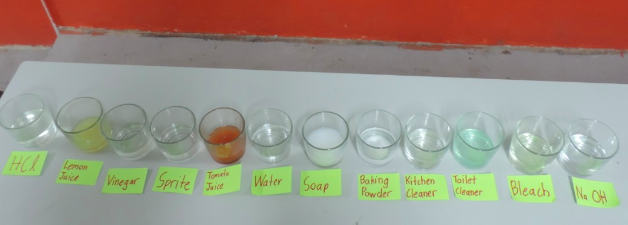Rice is a staple food mostly can be found in Asia. We usually eat the common white rice that is high in carbohydrate and taste plain but increase in sweetness as we chewed it more.
However, have you ever encounter black rice that will release purplish-reddish colour once we soaked them into water?
Black rice in Malaysia can be found mostly planted in Bario, Sarawak. The rice is planted in rural area and across the hills. However, we are not going to talk about the origin of the black rice but more of the black rice waste water that could be benefit us.
I teach Science in secondary school and we came across the topic of acid – base. In this chapter we learned about pH indicator that can be found naturally from our surroundings especially from fruits and plants. Plants or fruits that contain anthocyanin which exhibits the purplish colour in plants can swiftly change its colour depending on the acidity or alkalinity of the solution. For example, in acidic condition the anthocyanin will appear to be
red-orange while in alkali condition it will show blue-green colour.
In western world, red cabbage is famous for exhibiting the properties of anthocyanin, however the process of extracting red cabbage water is slightly complicated because we need to blend the red cabbage plus it would be less convenient since we can consume it and not from waste materials.
So the idea emerged when I tried to find an alternative for teaching my students about anthocyanin. I went to ask my students that we are searching for a native plants that can exhibit the similar properties of anthocyanin as red cabbage. After discussing with them, we
found local grown black rice that suits our criteria.

Hence, we hope that our finding could stimulate other young talents accorss the world to look for useful alternatives that available in their local community such as new materials for making bioplastic in the future.
I hope you can visit this YouTube link for more interactive explanation from my students.
https://www.youtube.com/watch?v=bNF-jp7-9m4&t=3s
Author: Mizwar Muhammad